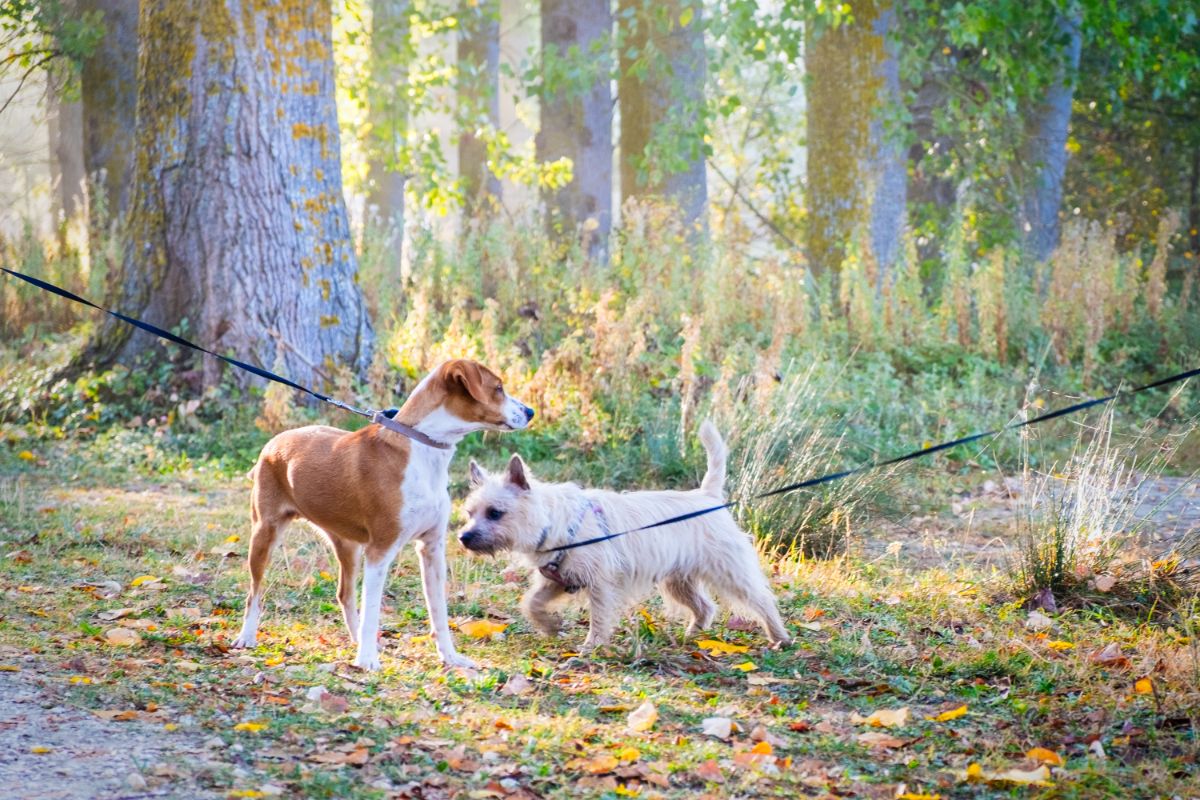Most dog owners will be aware that short leashes can be very restrictive and your furry friend may not have as much fun as they could have when they’re out in the fresh air with you.
However, as a result of this – you might think it’s best to get a longer dog leash to let your dog run a little more freely during walks. The problem is, this is not always the best option.
Remember, dog leashes are a way to not only stop your dog from running away and protect your dog, but it also helps to protect other dogs and other people from your dog.
So, when might it be best to go from a short leash to a long leash for your dog? This guide looks to tell you everything you need to know about this.
Read on and find out more.
Choosing The Right Dog Leash
There are actually long dog leashes that are considered the most safe option to choose. Generally speaking, these types of dog leash are about 10 to 15 feet in length and are normally made using nylon.
If you’ve ever seen these types of leashes before, you’ll be familiar with their design. The handle is shaped as a loop and it has a clip on the other side.
It’s important to note at this point that despite what some people have claimed, retractable leashes are very bad choices. They are not normally considered a safe option and this is primarily because the stop button inside and the attachments are extremely weak.
Luckily though, you can walk into many pet shops and find a safe long leash to buy, so you shouldn’t have to worry about finding the right one.
Choose A Body Harness
The best way that you can keep your furry friend safe when you opt to use a long leash is to find one that attaches to your dog’s body harness. Long leashes that are used in the traditional sense of connecting to your dog’s collar can be harmful to your dog.
This is because your dog can suffer damage to their neck and this can actually become permanent damage and even potentially life threatening.
Therefore, it’s always a good idea to use a body harness instead with a long dog leash, but make sure that you attach the clip to the back of the harness rather than to the front.
This will help to prevent sudden damage to your dog’s chest if they decide to bolt or they rapidly move when distracted by other dogs or humans.
Timing Is Everything

While it’s all fine and good to choose the right long leash for your dog, it’s not always the best choice for your dog or for you. It’s extremely important that you know the best time to choose a long leash.
Most of the time, your dog will be better off using a short leash until they have learned to be more placid and exhibit very polite and calm behaviour. These certain skill sets are critical in your decision making process.
In other words, if you suspect that your dog might run or pull on a long lead because they see other dogs or other sorts of distractions, then you should consider training your dog a little more first, until they get used to everything.
The best way that you can test to see when your dog is ready for a long leash and is exhibiting polite behaviour is by assessing if they follow a few of these following commands:
- Come!
- Drop it.
- Sit.
- Stay.
- Lie down.
If they can follow these basic commands, then they are likely to listen to you straight away if they are pulling on the lead or about to run after another dog for example.
If you find that your dog won’t listen to these commands or is taking a very long time to listen to these commands, then you are better off opting for a 6 foot long leash made with nylon instead.
It’s important to note at this point too that if your dog does suddenly start to pull on the leash and wants to bolt off, you should never use your hand to stop the nylon. Much like rope burn, the leash material will cause you pain and you’ll probably drop the leash.
Short Leash First, Then Long Leash
So, as we said – you should wait until your dog is trained enough to listen and obey commands before you decide to opt for long leashes. But once you have fully trained your furry friend, you might be wondering how long is too long?
The best rule of thumb we can give is that a leash should never be dragging on the ground. If you find that the leash is constantly on the ground, then your leash is too long!
Final Thoughts
Long leashes can be useful but you’ve got to make sure your dog is trained enough to obey commands before you opt for one. On top of this, you should pay attention to the leash length during walks.
If you find it is dragging on the ground – it’s too long!





